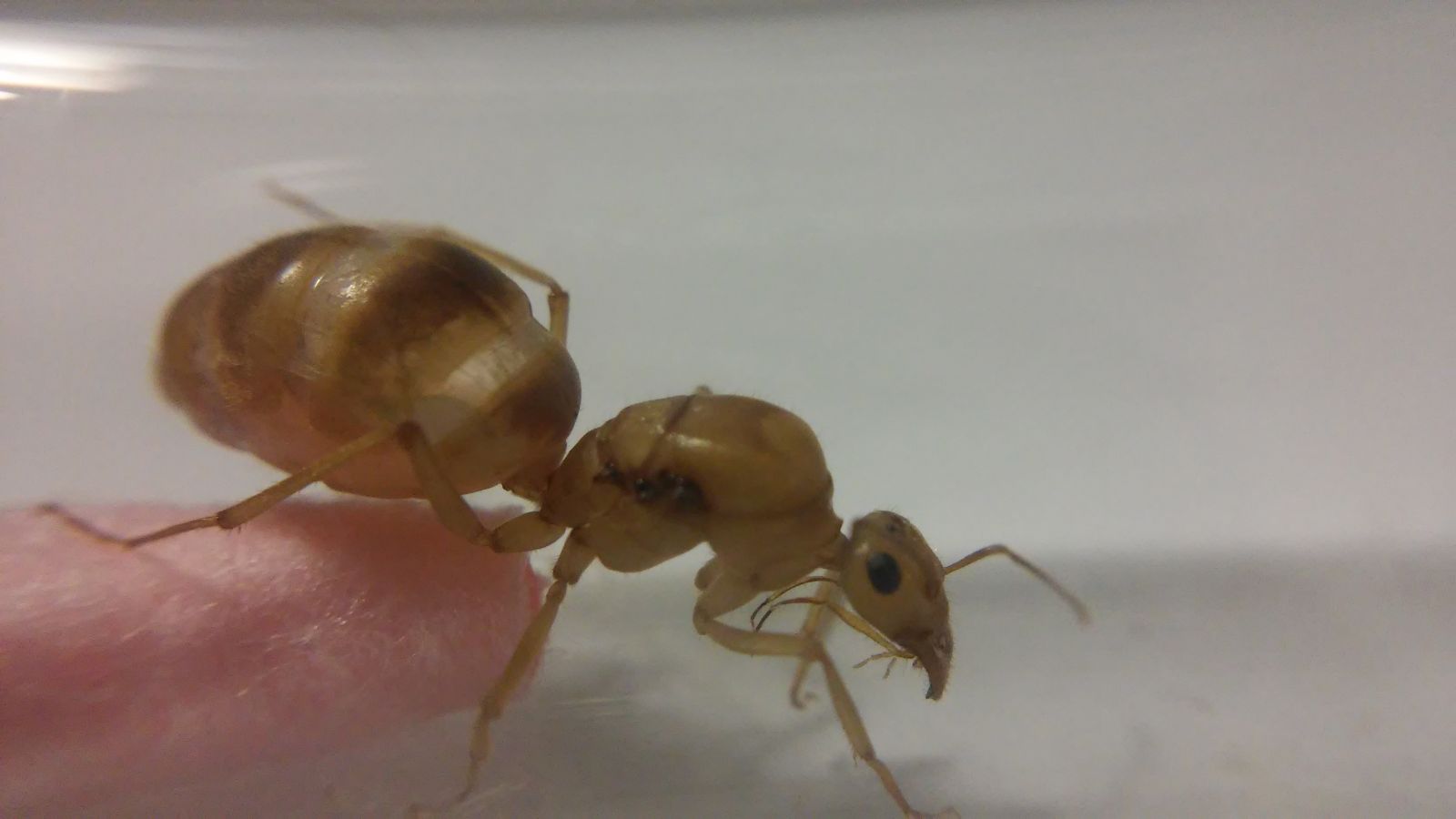
Should I be concerned? I feed roughly twice a week. She's not laid any eggs for 3 weeks.

To answer your actual question, pupae are born with empty stomachs and starving. The actual size of the ant will not grow, but the gaster will become larger with callow workers after they are fed their first meal.
Further, the first few ants a queen rears, called nanitics, are in many cases much smaller than successive generations of workers.
--
Edit: Sorry I read the question wrong, but will keep this anyways:
The exoskeleton does not grow. However, gaster, or abdomen, of ants, especially queens, will swell as the hundreds of ovaries go into full production, as in queens from mature colonies with an unlimited food supply.
Google "Solenopsis invicta queen" and browse some images to see size comparisons for when one is huge and swollen with eggs.
With your queen being so young, the increase in size almost certainly would be attributed to an increased intake of food, mostly water.
Edited by drtrmiller, November 22 2014 - 9:55 PM.
Okay, this is totally normal, take my Myrmecocystus queen

and Drew's Camponotus vicinus queen

for example.
Thanks for the info guys. I'm new to all this, I've done the basic research, just can't find the info I want.
Another question; do ant pupae vary in colour on species? I'm asking because I've seen a lot of wild pupae being brown in colour, but the ones this queen has are white. I'm just starting to doubt whether I'm looking after them alright, as the process from egg to larvae and pupae hatching are taking a long time in comparison to what I've read online.
A pupa in early stage is generally pale white. As it matures, its eyes (If it has them) will darken and its exoskeleton will darken also. Pupae take a looooong time to mature. At least a month minimum.
And it's not dead if workers and queen are looking after it.
If it is dead, it will be taken out of the nest or put it aside. Ants know better than we do when it comes to their own brood.
Edited by dean_k, November 23 2014 - 5:38 AM.
I wouldn't say it takes at least a month for a pupa to mature, but it certainly could. I've had ants go from egg to worker in just over a month. I also think part of the reason the queen's gaster is gigantic is because she is probably full of food as well.
My record on pupa growth is the highly prolific Tetramorium colony of mine. Since these were caught around San Francisco, these are northern ants, but they are kept in some pretty warm temperatures! ![]() I think the quickest pupa growth I got from them was the very first brood batch- I ended up getting workers in about three weeks, and the larva stage was the longest! I estimate the pupa stage was around ten days long for those workers before I got nanitics.
I think the quickest pupa growth I got from them was the very first brood batch- I ended up getting workers in about three weeks, and the larva stage was the longest! I estimate the pupa stage was around ten days long for those workers before I got nanitics. ![]()
My record on pupa growth is the highly prolific Tetramorium colony of mine. Since these were caught around San Francisco, these are northern ants, but they are kept in some pretty warm temperatures!
I think the quickest pupa growth I got from them was the very first brood batch- I ended up getting workers in about three weeks, and the larva stage was the longest! I estimate the pupa stage was around ten days long for those workers before I got naniti
That is about average of Tetramorium, my Tetramorium started laying eggs a couple minutes after I put them in their setup!!
Ten day pupa stage is crazy though! Even my Solenopsis xyloni took about two weeks!
Edited by Gregory2455, November 23 2014 - 3:46 PM.
Camponotus take a bit long. Have patience!
Anting is all about patience.
Having more than one colony will help diverting your attention.
Anting is all about patience.
Having more than one colony will help diverting your attention.
That is why I have 30. ![]()
Maybe waiting for more workers before the eggsplosion?
I see what you did there.
I was hoping somebody would 😉I see what you did there.
![]()
0 members, 1 guests, 0 anonymous users